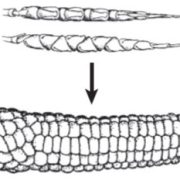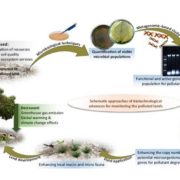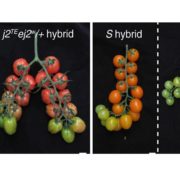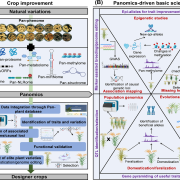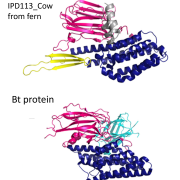De novo domestication: What about the weedy relatives?
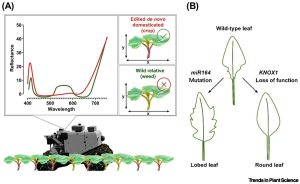 Because much of the genetic diversity of our crops plants was lost during domestication, many breeding efforts endeavor to cross in resilience genes from wild relatives. An alternative approach is to rapidly domesticate those wild relatives themselves, for example by editing genes that affect flowering time, seed shattering, or fruit or seed size. In this interesting Opinion article, Correia et al. raise the point that the wild, undomesticated close relatives of these de novo domesticated varieties are likely to be weedy pests and difficult to eliminate from fields. They propose an innovative solution, which is to also introduce traits into the new varieties that make them easy to spot for a field-based weeding robot. For example, the desired variety could express pigments such as anthocyanins or carotenoids in places the wild relative does not, signaling the robot to leave it alone. Alternatively, leaf shape could be changed from serrated to round, or vice versa. The authors point out that these small but meaningful changes in plant phenotype can be made through genome editing, avoiding the pitfalls of introducing foreign genes. (Summary by Mary Williams @PlantTeaching) Trends Plant Sci. 10.1016/j.tplants.2024.03.001
Because much of the genetic diversity of our crops plants was lost during domestication, many breeding efforts endeavor to cross in resilience genes from wild relatives. An alternative approach is to rapidly domesticate those wild relatives themselves, for example by editing genes that affect flowering time, seed shattering, or fruit or seed size. In this interesting Opinion article, Correia et al. raise the point that the wild, undomesticated close relatives of these de novo domesticated varieties are likely to be weedy pests and difficult to eliminate from fields. They propose an innovative solution, which is to also introduce traits into the new varieties that make them easy to spot for a field-based weeding robot. For example, the desired variety could express pigments such as anthocyanins or carotenoids in places the wild relative does not, signaling the robot to leave it alone. Alternatively, leaf shape could be changed from serrated to round, or vice versa. The authors point out that these small but meaningful changes in plant phenotype can be made through genome editing, avoiding the pitfalls of introducing foreign genes. (Summary by Mary Williams @PlantTeaching) Trends Plant Sci. 10.1016/j.tplants.2024.03.001



